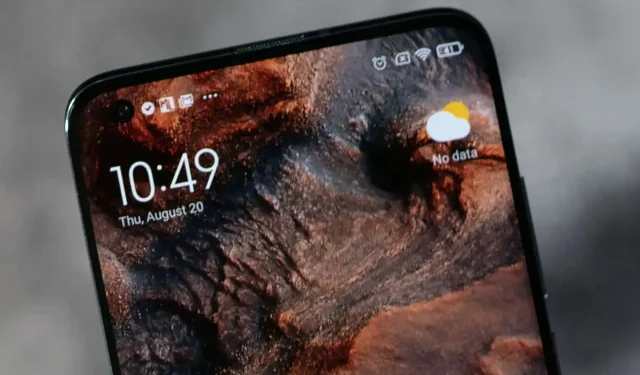How to Customize the Android Status Bar

Android status bar customization apps, Google Play Store offers several. Here are the most complete and effective.
One of the reasons for choosing Android over iOS is the existing configuration options and settings of Google’s mobile operating system. With the right apps, these options can change everything, including the status bar at the top of the screen.
Android status bar customization apps
In this guide, a small list of the best applications for this and what you can do just that. You can make the status bar a volume control, change its appearance, icon style, and even put a color gradient or image.
These applications require certain permissions, especially to be able to display on top of others, but after reading these lines, you will know everything that needs to be done and how to do it.
Super Status Bar
Super Status Bar, free or $2 to remove ads and use all options, is one of the most complete. Its flagship feature probably allows notifications to be displayed directly on the status bar, appearing and disappearing without that large window taking up screen space. On the home screen, tap “Ticket Text”, activate the “Status Bar Text Ticker Text”and “Disable Header Notifications”buttons. You can even customize the style.
You can also make the status bar a button to adjust brightness and volume. In the “Main Slider”on the main screen of the application, you will see various settings that can be controlled by swiping right on the status bar. They can even adjust automatically based on what’s happening on your phone – for example, when an alarm goes off, the status bar helps you control the sound.
There are many other customization items. You can change the icon style by going to the “Status Bar”on the home screen. The color, the order of the elements, the height of the panel, the appearance of the icons, you can do everything or almost everything.
Status bar and notch Custom colors and backgrounds
There is also a Status Bar & Notch Custom Colors and Backgrounds app that can create some pretty impressive effects. Until the image is included in the status bar. On the main screen of the app, select “Original”to start personalizing. You can choose a color from the palette, or choose a gradient or image from those offered. And you will be surprised how much it will change.
From the main screen, select Your Image to select your own images, or Premium for more options. You can use custom status bar and notch bar colors and backgrounds for free, but you can also pay the required $4 to remove in-app ads and access all possible options.
PowerLine: Status Line Indicators
Finally, we have PowerLine: Status Bar Indicators, free for one or two indicators, and $2 for the pro version, which allows you to use more. This allows you to do something rather interesting, which is access to a series of real-time progress bars at the very top of the screen. You can have battery level, processor, memory usage, cellular and Wi-Fi signal and phone usage.
Everything is highly customizable with the tools in the app. Click the + button in the bottom right corner to add new indicators and then the desired indicators. Everything from line color and thickness to indicator strip alignment and width can be customized. For the perfect rendering for you. Stripes can even be placed at the bottom of the screen instead of at the top.
There are some very good indicators, such as one that shows progress over the course of a day or a week, or one that acts like a barometer. The app also integrates very well with Tasker, giving you even more options. The set is very easy to use and you will find one or two indicators that will come in handy every day.
Leave a Reply